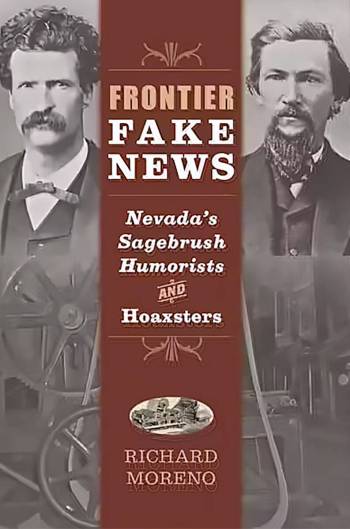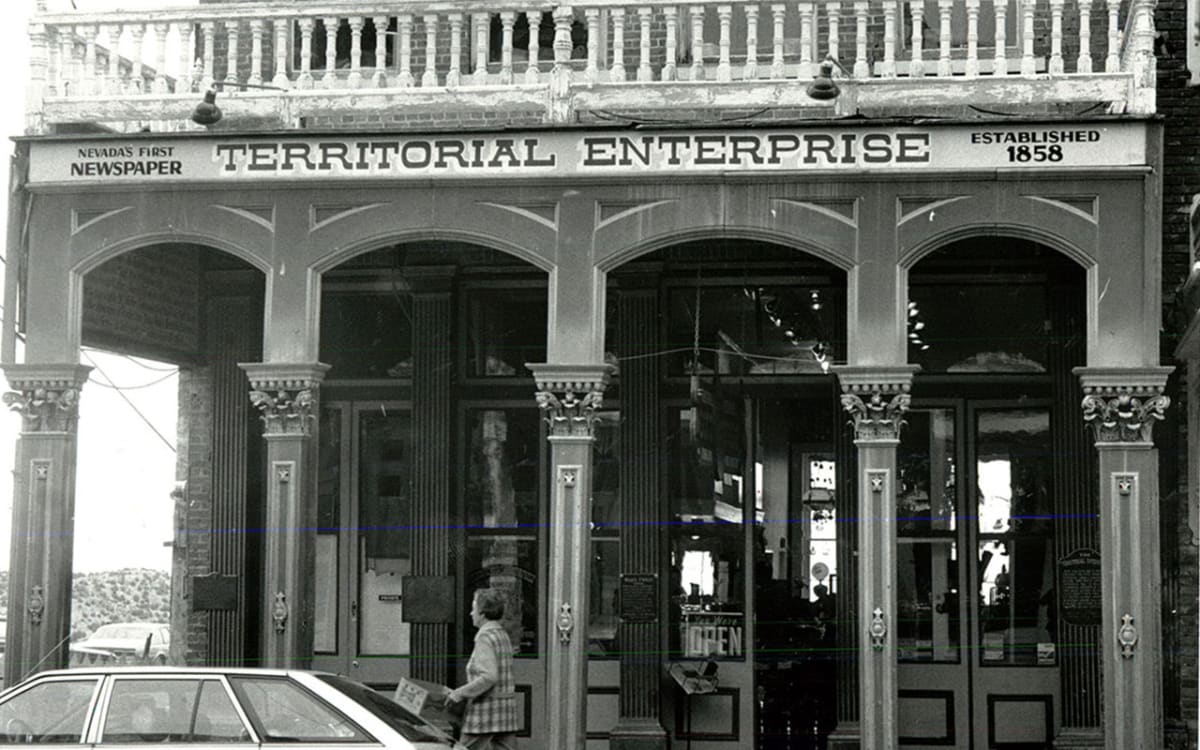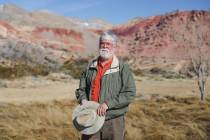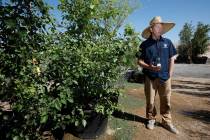Richard Moreno begins his most recent examination of Nevada history, Frontier Fake News: Nevada’s Sagebrush Humorists and Hoaxsters, with a personal anecdote: In the mid-1980s he contributed an anonymous press release to the revived Territorial Enterprise newspaper of Virginia City detailing the corrupt machinations of one Winslow P. Patterson, president of the United Minerals Consolidated Ltd. mining company based in Delaware. 
In this press release, the people of Virginia City were informed that a table would be set up “at the corner of C and Union Streets … where the company would offer cash on the spot to anyone wishing to sell their property.” Apparently, the company intended to purchase the entire town of Virginia City in order to turn it into a pit mine.
Moreno then wrote a second press release a few weeks later. In response to protests, the company had compromised, saying they would only raze half of the town, and in a spasm of generosity, an 8-foot-high concrete wall would be erected along the east side of C Street to protect everyone from the mine’s operations; but of course, the rest of Virginia City would remain on the mountain side overlooking the pit, conjuring images of a town left to cling to a desolate precipice. Once the mine tapped out, the release assured residents, the pit would be converted into a country club and marina called “Rancho Virginia.”
As one might imagine, this incensed the staff of the Territorial Enterprise, and multiple editorials were published in response detailing the company’s other crimes and calling into question the supposed benevolence of their motives. Another company, United Mining, requested a clarification so as to distinguish its activities from those of United Minerals, stating that while they could appreciate satirical journalism, the releases and the subsequent editorial responses were “causing problems and interference with our business and personal relationships.”
The whole story, you see, was a hoax, and one that was in keeping with the traditions of the Territorial Enterprise, the newspaper that made Samuel Clemens into Mark Twain. Twain, along with the other writers of the Enterprise (William Wright aka Dan De Quille, Lyin’ Jim Townsend, Fred Hart, among others) weren’t above fabricating a good hoax. Sometimes the mischief, as with Moreno’s fake press releases from a fake mining company headed by a fake president with a ridiculous name, came from principle: to shine a light on institutional corruption and corporate greed, unfair labor practices, unscrupulous political figures. Just as often, a tall tale, a witticism, a satirical humor piece beside “serious” news was meant simply to entertain and sell newspapers. The cleverer and more outlandish, the better. What did it matter if it wasn’t true in the strictest sense? The stories, even when founded on lies, were written about concerns pertinent to that community and incorporated much of the “local color” and sensibilities of the mining camps.
Immense changes were taking place at breakneck speed, impelled by silver and gold prospecting: boom towns doubling in size in a matter of a few short years, and just as quickly going bust and emptying of their inhabitants; a fractious and unsettled place and time that was defined as much by a sense of limitless possibilities as it was by a thinly disguised undercurrent of anarchy. This undercurrent manifested in any number of ways: the fragile peace between white settlers and native tribes, get-rich-quick scams, corruption in the halls of government, the less-than-ideal conduct of monied interests, economic instability, a dysfunctional legal system.
This turbulent backdrop of Nevada’s early days as a state is essential to understanding how the personalities that make up Moreno’s book came about. These writers wrote for the people in the mining camps, as much to entertain them as to inform them after long days of hard labor. Many of these writers had personal experience working in the silver mines, including Mark Twain, who came west from Missouri hoping to strike it rich. Moreno includes an anecdote from the 1893 book The Story of the Files by the literary historian Ella Sterling Cummins — who coined the term “Sagebrush School” to define the literary movement that coalesced in the columns of Nevada’s newspapers — concerning Mark Twain’s brief stint at prospecting. According to the story, Twain and a friend were millionaires for roughly 10 days after they discovered a rich lode. Why so short a time? They failed to file the proper paperwork for staking a claim within the 10-day period allotted by law. By the time they returned to the lode, the area was overrun by other prospectors with the correct papers.
This story may be apocryphal. Maybe not. Nonetheless, it shines a light on the reality of what it was like to live in Nevada during its first mining boom: fortunes flipping on a dime, perpetual insecurity. How could such a dramatic time not find its way into the scribes who lived and wrote during it?
Following a general overview of the history of fake news in the United States, a legacy that goes back to the founding of the country, Moreno dedicates Chapter 3 to the Sagebrush School, briefly sketching the times and people that influenced Samuel Clemens, who admitted as much: There would be no Mark Twain without the Sagebrush School and the writing skills he developed while working for the Territorial Enterprise, which included familiarity with the literary hoax and the tall tale. “The Celebrated Jumping Frog of Calaveras County” comes to mind.
Mark Twain, like Charles Dickens, seems to exist less as a person and more as an institution in the Republic of Letters. His stature in American literary history is such that this perception is almost unavoidable; this may owe a great deal to Clemens’s deliberate and successful efforts to turn Mark Twain from a mere pen name into a full-fledged persona. As a consequence, we fail to recognize the other hands that shaped that American voice, as well as the forces at work in the place and time Sam Clemens came of age as a writer. Richard Moreno’s efforts here help to complete the picture. As he notes in the closing pages of Frontier Fake News:
“Journalist Arthur McEwen observed that Nevada was seminal for Mark Twain: It was the place where ‘he got his point of view — that shrewd, graceless, good-humored, cynical way of looking at things as they in fact are — unbullied by authority and indifferent to tradition — which has made the world laugh.’ ” ◆














